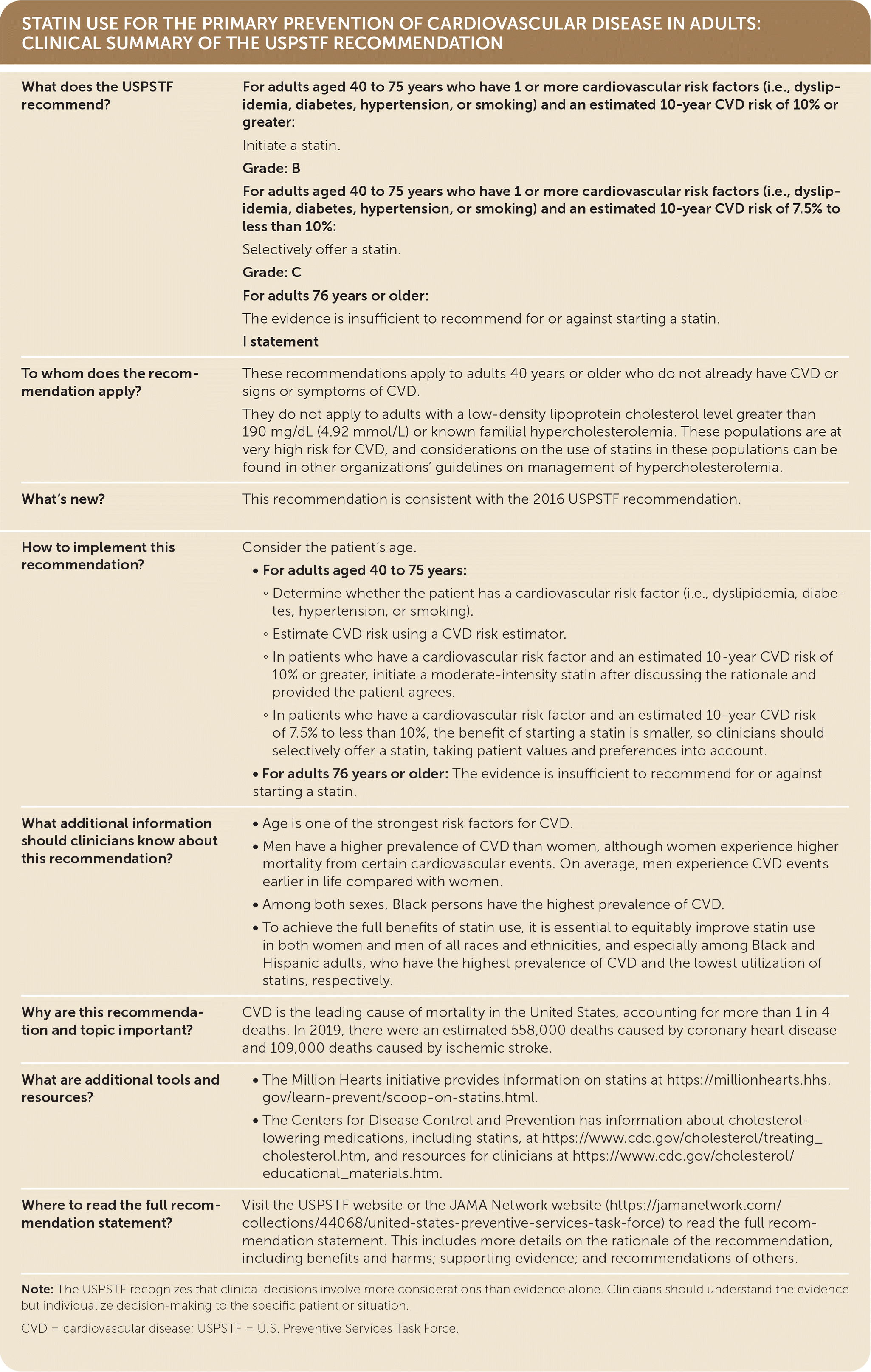
Am Fam Physician. 2023;107(2):183-184
Related Putting Prevention Into Practice: Statin Use for the Primary Prevention of Cardiovascular Disease in Adults
As published by the USPSTF.

| What does the USPSTF recommend? | For adults aged 40 to 75 years who have 1 or more cardiovascular risk factors (i.e., dyslipidemia, diabetes, hypertension, or smoking) and an estimated 10-year CVD risk of 10% or greater: Initiate a statin. Grade: B For adults aged 40 to 75 years who have 1 or more cardiovascular risk factors (i.e., dyslipidemia, diabetes, hypertension, or smoking) and an estimated 10-year CVD risk of 7.5% to less than 10%: Selectively offer a statin. Grade: C For adults 76 years or older: The evidence is insufficient to recommend for or against starting a statin. I statement |
| To whom does the recommendation apply? | These recommendations apply to adults 40 years or older who do not already have CVD or signs or symptoms of CVD. They do not apply to adults with a low-density lipoprotein cholesterol level greater than 190 mg/dL (4.92 mmol/L) or known familial hypercholesterolemia. These populations are at very high risk for CVD, and considerations on the use of statins in these populations can be found in other organizations' guidelines on management of hypercholesterolemia. |
| What's new? | This recommendation is consistent with the 2016 USPSTF recommendation. |
| How to implement this recommendation? | Consider the patient's age.
|
| What additional information should clinicians know about this recommendation? |
|
| Why are this recommendation and topic important? | CVD is the leading cause of mortality in the United States, accounting for more than 1 in 4 deaths. In 2019, there were an estimated 558,000 deaths caused by coronary heart disease and 109,000 deaths caused by ischemic stroke. |
| What are additional tools and resources? |
|
| Where to read the full recommendation statement? | Visit the USPSTF website or the JAMA Network website (https://jamanetwork.com/collections/44068/united-states-preventive-services-task-force) to read the full recommendation statement. This includes more details on the rationale of the recommendation, including benefits and harms; supporting evidence; and recommendations of others. |
The full recommendation statement is available at https://www.uspreventiveservicestaskforce.org/uspstf/recommendation/statin-use-in-adults-preventive-medication.
The USPSTF recommendations are independent of the U.S. government. They do not represent the views of the Agency for Healthcare Research and Quality, the U.S. Department of Health and Human Services, or the U.S. Public Health Service.
